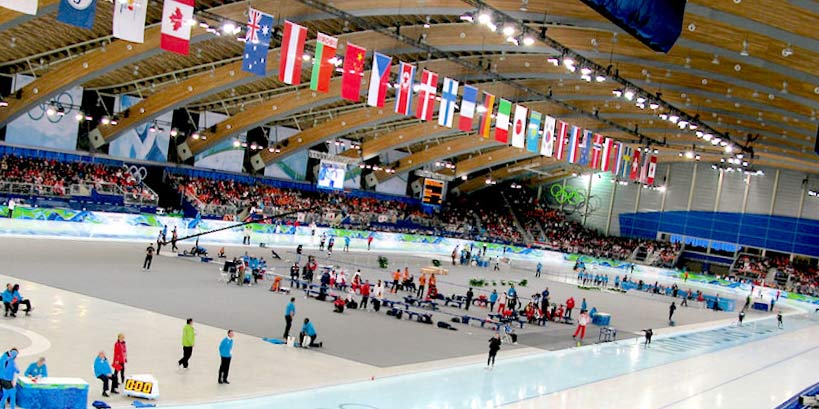The 2010 Vancouver Winter Olympic and Paralympic Games brought more than just athletic competition to British Columbia. They sparked a unique initiative that left a lasting mark on communities across the province. This initiative was 2010 Legacies Now (2010LN), a non-profit organization that turned the Olympic spotlight into a catalyst for long-term social change.
The Role of Online Casinos in Post-Olympic British Columbia
The 2010 Olympics didn’t just leave behind stadiums and sporting venues; they ignited a movement of community engagement and long-lasting social programs. In the digital age, new forms of engagement have emerged, extending the reach of British Columbia’s entertainment and economic sectors. One such development is the rise of online casinos, which are captivating digital audiences across the province. Much like 2010 Legacies Now fostered diverse participation in sports, arts, and literacy, online casinos are engaging a wide range of users, providing entertainment and economic growth in a regulated, accessible environment.
About 2010 Legacies Now
2010LN wasn’t your typical Olympic legacy program. Instead of focusing solely on sports venues and infrastructure, this organization set its sights on creating sustainable social legacies across British Columbia. Their work began years before the first athlete arrived and continued well after the Olympic flame was extinguished. From boosting sports participation to enhancing literacy rates, from supporting local artists to improving accessibility for people with disabilities, 2010LN’s impact touched nearly every corner of community life in B.C.
Mission and Values
At its core, 2010LN’s mission was simple yet ambitious: to create sustainable legacies in sport, recreation, arts, literacy, accessibility, and volunteerism that benefited all British Columbians.
This mission was supported by a set of core values that guided every aspect of their work:
- Ethical and respectful behavior
- Innovation and creativity
- Teamwork and collaboration
- Inclusivity and social sustainability
- Olympic and Paralympic values
- Excellence and fiscal responsibility
These values weren’t just words on paper. They formed the foundation of 2010LN’s approach, shaping how they interacted with partners, developed programs, and measured success.
The Story of 2010 Legacies Now
Origins
The story of 2010LN began in 1999 when Vancouver was still vying to become Canada’s bid city for the 2010 Winter Games. The organizers had a novel idea: what if they could use the Games as a catalyst for positive change, starting even before the bid was won?
This idea led to the creation of LegaciesNow, a program within the bid committee focused on sports development and community outreach. It was a strategic move that helped build support for the Olympic bid while also ensuring that the pursuit of the Games wouldn’t drain resources from B.C.’s existing sports system.
Evolution
As Vancouver’s bid progressed, so did the vision for LegaciesNow. In 2002, it became an independent non-profit society, allowing it to capitalize on more opportunities beyond the bid process. This evolution caught the attention of community leaders across B.C., from Simon James on Bowen Island to organizers of the Vancouver Open tennis tournament.
The real transformation came in 2004, a year after Vancouver won the right to host the Games. Recognizing the potential for broader impact, the provincial government expanded 2010LN’s mandate. No longer limited to sports, the organization now had the green light to create legacies in arts, literacy, volunteerism, and community development.
This expansion turned 2010LN into a unique entity in the Olympic world – an organization using the Games as a springboard for wide-ranging social impact across an entire province. The “2010 model,” as it came to be known, would inspire future Olympic host cities.
Key Milestones That Shaped It
| 1999 | Founding of 2010 Legacies Now | Established during Vancouver’s bid for the 2010 Winter Olympic Games to create a lasting legacy focused on sport and recreation. |
| 2000 | Launch of Legacies Now Initiative | Officially launched as part of the Vancouver-Whistler bid, focusing on ensuring sport legacies before the Games. |
| 2002 | Independence as a Non-Profit Society | 2010 Legacies Now became an independent non-profit organization, expanding its mission beyond sport to include broader community benefits. |
| 2003 | Expansion of Mission | After winning the bid to host the 2010 Winter Games, 2010LN broadened its scope to include arts, literacy, volunteerism, and community development. |
| 2003 | Creation of Game Plan BC | Launched to increase the number of B.C. athletes on national teams and improve their performance at the international level. |
| 2003 | Launch of Action Schools! BC | A program designed to promote physical activity and healthy living among schoolchildren across British Columbia, reaching over 400,000 students. |
| 2004 | Introduction of Spirit of BC Community Committees | Established committees across B.C. to engage communities in planning and benefiting from the 2010 Games. |
| 2004 | Launch of Hosting BC | A program to support communities in bidding for and hosting national and international sports events, enhancing B.C.’s reputation as a premier sport event destination. |
| 2004 | Start of Arts Now Initiative | Focused on enhancing the creative capacity of B.C.’s communities and supporting artistic excellence, making the arts a key part of the 2010LN mandate. |
| 2005 | Launch of VolWeb.ca | An online platform connecting volunteers with event organizers across B.C., increasing volunteerism and community participation. |
| 2007 | Launch of Accessible Tourism Initiative | Aimed to make B.C. a premier travel destination for people with disabilities, promoting inclusivity and accessibility. |
| 2007 | Introduction of Measuring Up | A program designed to help communities assess and improve their accessibility for people with disabilities and seniors. |
| 2008 | Continued Growth and Collaboration | 2010LN furthered its reach through increased collaboration with various sectors, expanding programs like Literacy Now and Volunteer Now to more communities. |
List of 2010 Legacies Now Programs
2010 Legacies Now implemented a wide range of programs across British Columbia, each designed to create lasting impacts in different areas of community life:
Sport and Recreation Now This program embodied the “From Playground to Podium” philosophy, aiming to increase sports participation at all levels while supporting high-performance athletes. Key initiatives included:
- BC Sport Participation Program: Increased community sports involvement
- Hosting BC: Supported communities in hosting sporting events
- Game Plan BC: Provided support for elite athletes
Arts Now Arts Now focused on enhancing creative capacity and supporting artistic excellence in communities across B.C. Notable programs included:
- Catalyst: Provided funding for arts organizations to enhance their capabilities
- Innovations: Supported new community arts initiatives
- Creative Communities: Helped local governments develop cultural plans
Literacy Now This program aimed to build a culture of lifelong learning and improve access to literacy programs throughout the province. Key initiatives included:
- Literacy Now Communities: Supported local literacy planning
- Parents as Literacy Supporters (PALS): Engaged families in children’s literacy development
- Literacy, Education, Activity and Play (LEAP): Combined literacy with physical activity for young children
Volunteers Now Volunteers Now worked to develop volunteer capacity across B.C., connecting people with opportunities in their communities. Major initiatives included:
- VolWeb.ca: An online volunteer matching platform
- Volunteer Centre Opportunity Listings Tool (VCOLT): Helped volunteer centers manage their positions online
Spirit of BC Community Committees
These committees, representing over 200 communities across B.C., engaged local citizens in opportunities arising from the Games. They organized events like the annual Spirit of BC Week, celebrating local culture and community achievements.
Accessibility and Inclusion
This focus area aimed to make B.C. more inclusive and accessible for everyone. Key programs included:
- Measuring Up (helping communities assess and improve accessibility)
- Accessible Tourism (making B.C. a premier destination for travellers with disabilities)
- Aboriginal Youth Sport Legacy Fund
Key Partnerships and Collaborations
The success of 2010LN lay in its ability to forge partnerships and collaborations across sectors. By bringing together government agencies, non-profits, businesses, and community groups, 2010LN was able to create programs with far-reaching impact.
One standout example was Action Schools! BC. This program, which promoted physical activity and healthy eating in schools, brought together an impressive array of partners, including the Ministries of Health and Education, school trustees, principals, parent advisory councils, and universities. The result? A program that reached over 400,000 students across B.C.
Another notable collaboration was the Chill program. 2010LN worked with various partners, including Bell Canada, Cypress Mountain, and community organizations, to bring this snowboarding program for at-risk youth to B.C. In just six weeks, 2010LN mobilized partners and resources to launch the program, demonstrating their agility and collaborative prowess.
High-Engagement Funding Model
2010LN didn’t just write checks. Their high-engagement funding model provided strategic support beyond financial contributions. This approach included:
- Coaching and mentoring
- Strategic planning assistance
- Networking and partnership facilitation
- Performance monitoring and evaluation
For example, in the Arts Partners in Creative Development program, 2010LN not only provided initial funding but also brought together a group of funders who had never collaborated before. This approach allowed for a more substantial investment in B.C.’s arts sector and fostered new relationships among funding bodies.

Impact and Lessons Learned
The impact of 2010LN extended far beyond the Olympic Games. By 2008, their programs had:
- Reached over 400,000 students through Action Schools! BC
- Supported 90 community literacy task groups representing over 400 communities
- Invested over $2 million in sport-hosting events across 33 communities
- Engaged more than 8,000 volunteers through VolWeb.ca
But perhaps more important than these numbers are the lessons learned:
- Start early: Legacy planning should begin well before the event itself.
- Be a trusted partner: 2010LN’s independence allowed it to build trust across sectors.
- Fill gaps, don’t duplicate: Focus on areas where you can add unique value.
- Embrace collaboration: Partnerships can amplify impact and reach.
- Think long-term: Plan for sustainable impact beyond the event.
The story of 2010 Legacies Now is more than just an Olympic success story. It provided a blueprint for how major events can be leveraged to create lasting social change. By starting early, thinking broadly, and fostering collaboration, 2010LN turned a two-week sporting event into years of community development and social progress.
From supporting local initiatives like the Abbeyfield House in Burnaby to organizing province-wide Olympic celebrations, 2010LN’s impact was felt in communities large and small. As future cities consider bidding for major events, the 2010LN model offers valuable lessons. It shows that with vision, collaboration, and commitment, the impact of these events can extend far beyond the closing ceremonies, touching lives and transforming communities for years to come.
While 2010LN as an organization has since evolved, its legacy continues to inspire and inform approaches to leveraging major events for social good. The programs it initiated, the partnerships it fostered, and the community engagement it sparked continue to benefit British Columbians, serving as a testament to the power of innovative thinking in legacy planning.

